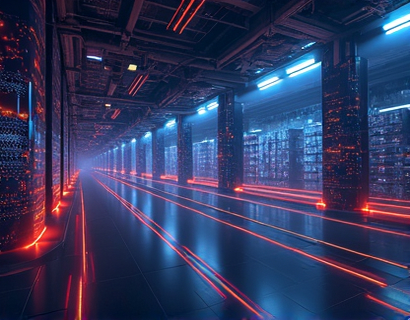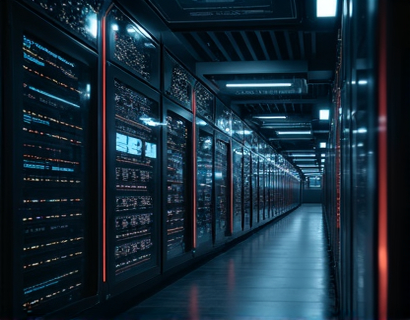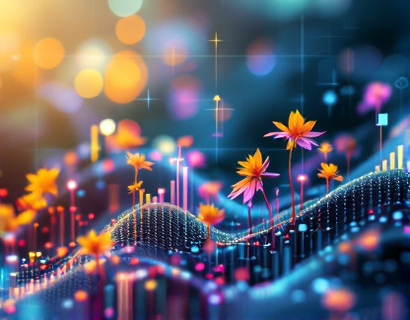Revolutionizing Aquaculture Business Management with Advanced Software Solutions
In the rapidly evolving landscape of aquaculture, business owners and managers face numerous challenges that can impact the success and sustainability of their operations. From managing complex logistics and ensuring optimal water quality to tracking financial performance and complying with regulatory standards, the demands are multifaceted. Advanced software solutions have emerged as a game-changer, offering comprehensive tools that streamline operations, enhance productivity, and optimize resource use. These solutions are designed to provide aquaculture businesses with the edge they need to thrive in a competitive market.
Streamlining Operations
One of the primary benefits of implementing advanced software in aquaculture is the significant improvement in operational efficiency. Traditional methods often rely on manual data entry and paper-based records, which are not only time-consuming but also prone to errors. Modern software solutions automate these processes, allowing for real-time data capture and management. This automation reduces the workload on staff, minimizes human error, and ensures that critical information is always up-to-date and accessible.
For instance, integrated management systems can handle a wide range of tasks, from feeding schedules and water quality monitoring to inventory management and financial tracking. These systems can be customized to fit the specific needs of each aquaculture operation, ensuring that all aspects of the business are efficiently managed. By centralizing data and processes, owners and managers can make informed decisions quickly, leading to improved overall performance.
Enhancing Productivity
Productivity is a key factor in the success of any aquaculture business. Advanced software solutions are designed to boost productivity by automating routine tasks and providing valuable insights through data analytics. For example, automated feeding systems can adjust feed quantities based on real-time data such as water temperature, fish size, and growth rates. This ensures that fish receive the optimal amount of feed, reducing waste and improving growth rates.
Additionally, software can facilitate better scheduling and resource allocation. By analyzing historical data and current conditions, these systems can predict the best times for certain activities, such as harvesting or maintenance. This predictive capability helps businesses operate more smoothly, reducing downtime and increasing output. Moreover, the ability to track and analyze productivity metrics allows managers to identify areas for improvement and implement targeted strategies to enhance performance.
Optimizing Resource Use
Resource optimization is crucial in aquaculture, where water, feed, and energy are significant costs. Advanced software solutions provide tools to monitor and manage these resources more effectively. For example, water quality monitoring systems can continuously track parameters such as pH, dissolved oxygen, and ammonia levels. If any parameters fall outside the optimal range, the system can trigger alerts, enabling prompt corrective actions to maintain a healthy environment for the fish.
Feed management is another area where software can make a substantial impact. By integrating with feeding equipment, these systems can ensure that the right amount of feed is dispensed at the right times, reducing waste and lowering costs. Energy management tools can also help optimize the use of electricity, particularly in operations that rely on pumps and aerators. By identifying peak usage times and suggesting adjustments, these tools can lead to significant savings.
Compliance and Reporting
Compliance with environmental and regulatory standards is a critical aspect of running a sustainable aquaculture business. Advanced software solutions can simplify this process by providing tools for tracking and managing compliance requirements. These systems can store and organize relevant documentation, generate reports, and ensure that all necessary records are maintained in a structured and accessible manner.
For instance, software can help track chemical usage, waste disposal, and other environmental impacts, ensuring that operations remain within regulatory limits. This not only helps avoid fines and penalties but also enhances the business's reputation as a responsible and sustainable operator. Additionally, the ability to generate detailed reports for regulatory audits and certifications can save time and reduce stress for business owners and managers.
Data Analytics and Decision Making
One of the most powerful features of advanced aquaculture software is its data analytics capabilities. By collecting and analyzing vast amounts of data, these systems provide insights that can drive strategic decision-making. For example, growth rate data can be used to optimize stocking densities, while feed conversion ratios can inform decisions on feed types and quantities. These insights can lead to more efficient operations and higher profitability.
Predictive analytics is another valuable tool. By analyzing historical data and current trends, software can forecast future scenarios, such as potential disease outbreaks or market fluctuations. This foresight allows business owners to take proactive measures, such as adjusting feeding schedules or implementing preventive health measures, to mitigate risks and ensure business continuity.
Integration and Scalability
Modern aquaculture software solutions are designed to be highly integrable and scalable. They can connect with a wide range of hardware devices, from sensors and feeders to pumps and cameras, creating a comprehensive and interconnected system. This integration ensures that all components of the operation work seamlessly together, providing a holistic view of the business.
Scalability is also a key consideration, as businesses grow and evolve. Advanced software can accommodate increasing data volumes and expanding operations without compromising performance. This flexibility ensures that the investment in software remains valuable over time, supporting the long-term growth and success of the aquaculture business.
User-Friendly Interfaces
Despite the complexity of the data and processes they manage, advanced aquaculture software solutions are designed to be user-friendly. Intuitive interfaces and user guides make it easy for staff to navigate and utilize the system's features. This accessibility is crucial, as it ensures that all team members can effectively contribute to the operation's success, regardless of their technical background.
Training and support are often provided by software vendors, helping businesses transition smoothly to the new system. Ongoing support ensures that any issues are resolved promptly, and staff can continue to maximize the software's capabilities.
Case Studies and Success Stories
Numerous aquaculture businesses have successfully implemented advanced software solutions, achieving significant improvements in various areas. For example, a large-scale salmon farm in Norway reported a 15% reduction in feed costs and a 10% increase in growth rates after integrating an advanced feed management system. Another shrimp farm in Thailand saw a 20% decrease in water treatment costs and a 15% improvement in water quality stability by using a comprehensive water management software.
These success stories highlight the tangible benefits of adopting advanced software in aquaculture. By streamlining operations, enhancing productivity, and optimizing resource use, businesses can achieve higher profitability and sustainability, giving them a competitive edge in the market.
Conclusion
The integration of advanced software solutions in aquaculture is not just a trend but a necessity for modern business management. These tools offer a comprehensive approach to streamlining operations, enhancing productivity, and optimizing resource use. By leveraging the power of data analytics and automation, aquaculture businesses can overcome challenges, comply with regulations, and make informed decisions that drive success. As the industry continues to grow and evolve, embracing advanced software will be essential for staying ahead in a competitive and dynamic market.










































